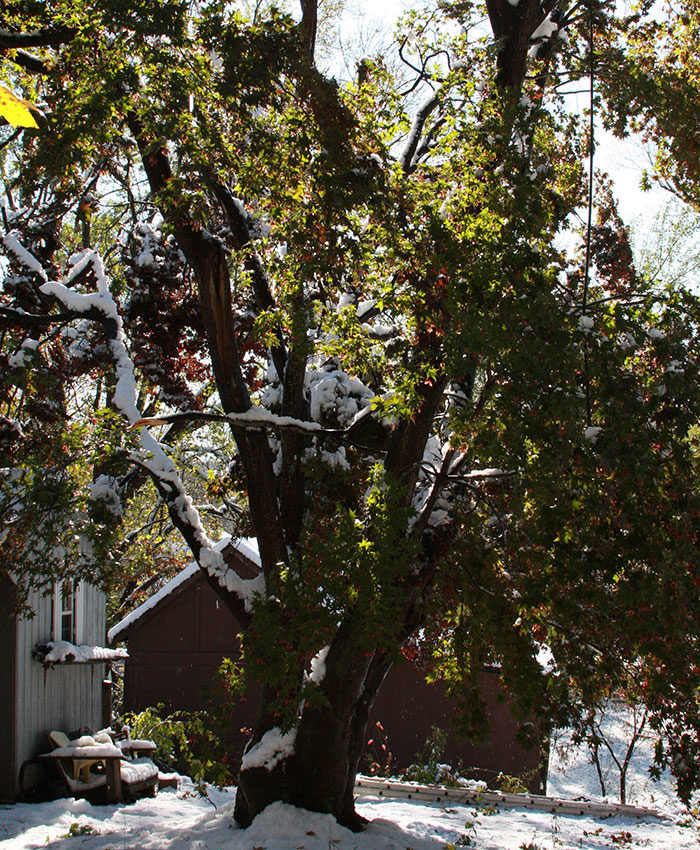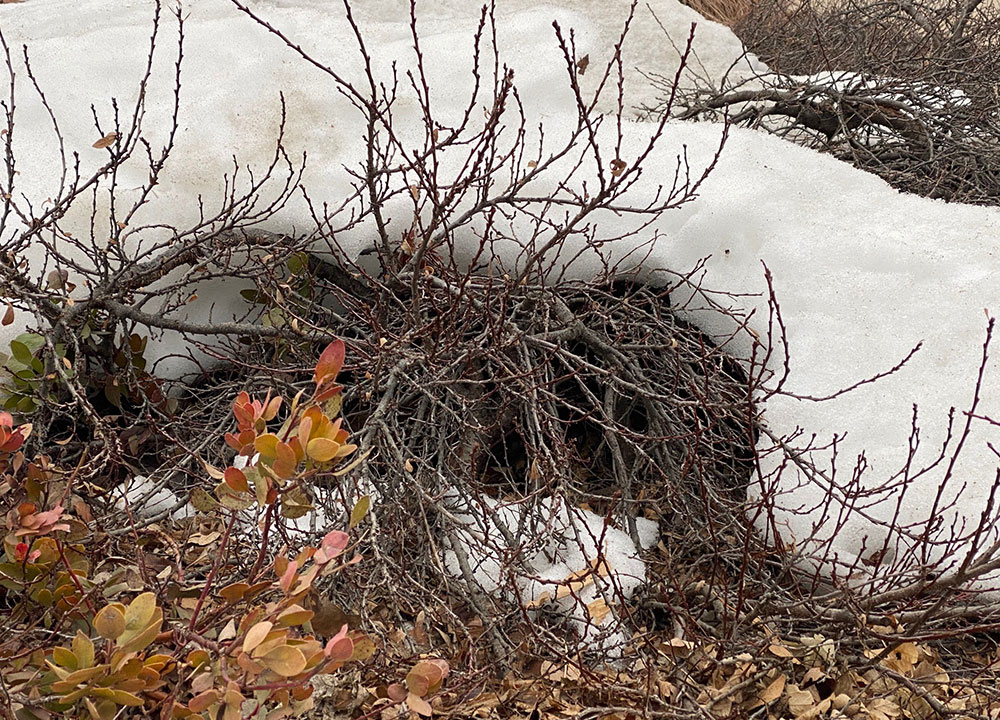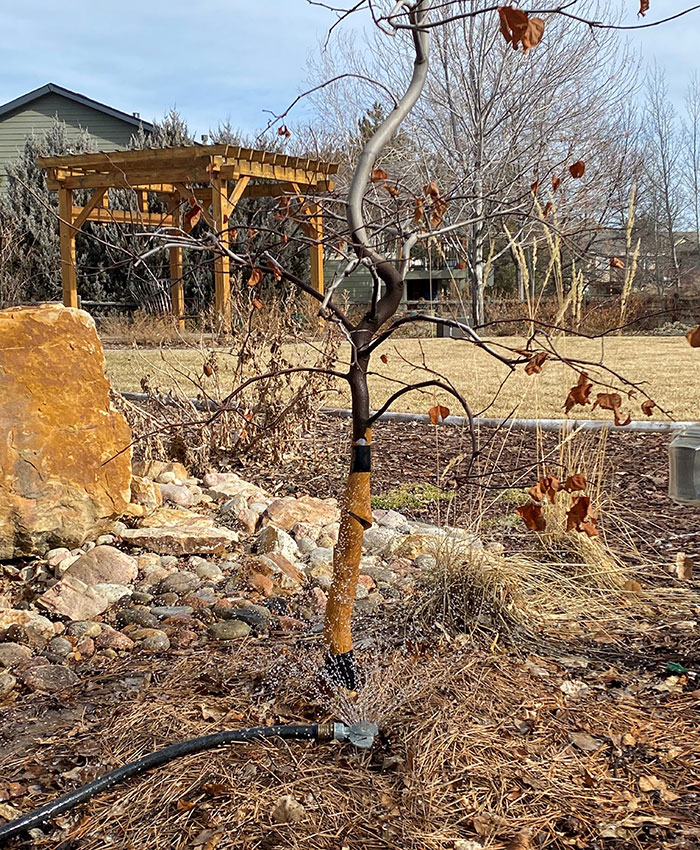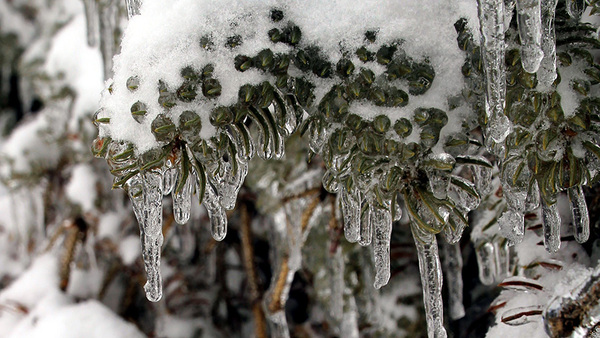
While many in the Mountain West are used to their gardens being buried under feet of snow throughout winter, others of us are more accustomed to a storm that drops a few inches of the powdery white stuff, which then melts away in a couple of days. The winter of 2019–2020 has been anything but typical on the front range of Colorado so far. We received a foot and a half of wet, heavy snow just before Thanksgiving that froze into a thick blanket of ice over subsequent days. Over the beginning of this year, our landscapes have become a patchwork of snow and ice fields in north-facing or shady spots and in areas of our usually dry, uncovered landscapes. As the snow continues to recede, what should you be on the lookout for in your garden?
Damage from wind and snowdrifts

Gale-force winds have toppled a few trees and broken branches in several locations. It’s a good idea to survey your landscape to see if there is any serious damage. Prune back any damage now while the trees are dormant. In some cases, drifting or shoveling of snow onto lower branches of shrubs can cause breakage or flattening to the ground. You may not know for several weeks after melting if such branches will spring back to their original shape, so you may decide to prune them back as well.
Damage from critters

Speaking of pruning, rabbits have been running around on top of the snow and ice, reaching areas they can’t usually access. If you notice remnants from their “pruning” of your bushes, you may need to do some shaping to correct the damage. Additionally, if you see tunnels in sections of your lawn, it’s very likely you had voles feasting on grass under the cover of snow. Raking the area clear and letting the healthy grass fill in is your best bet. You may also patch with seed. What to do about the voles themselves is another question. Rather that treating them with pesticides, I prefer to remove the habitat they love to live in. Low-growing junipers (Juniperus spp. and cvs., Zones 2–10) are a favorite. Take note: if you have vole tracks in your lawn, voles may have also eaten some of your woody plants at their bases.
Damage to the lawn

While it doesn’t happen appear in our usually dry climate, snow mold may develop in late winter or early spring as the snow melts from your lawn. If you notice circles of matted down straw-colored grass, you may have snow mold. There are two types: gray and pink, each showing its respective color on closer inspection. Gray snow mold only affects the blades of the grass, but pink snow mold can damage the crowns and roots of the plant. Again, raking up the area is the best remedy, which allows the grass to dry out and gives healthy grass a chance to fill in. If it doesn’t fill in, you may choose to spot seed.
Should you winter water?

Normally, we are discussing the need to winter water your trees, shrubs, and perennials at this time of year. We haven’t had significant moisture in several weeks, so check the soil moisture in areas that do not have snow cover. If they’re dry, give your plants a good soak on the next warm day.
For more information on repairing winter damage, check out this article.
—Michelle Provaznik is executive director of the Gardens on Spring Creek in Fort Collins, Colorado.


















Comments
Log in or create an account to post a comment.
Sign up Log in